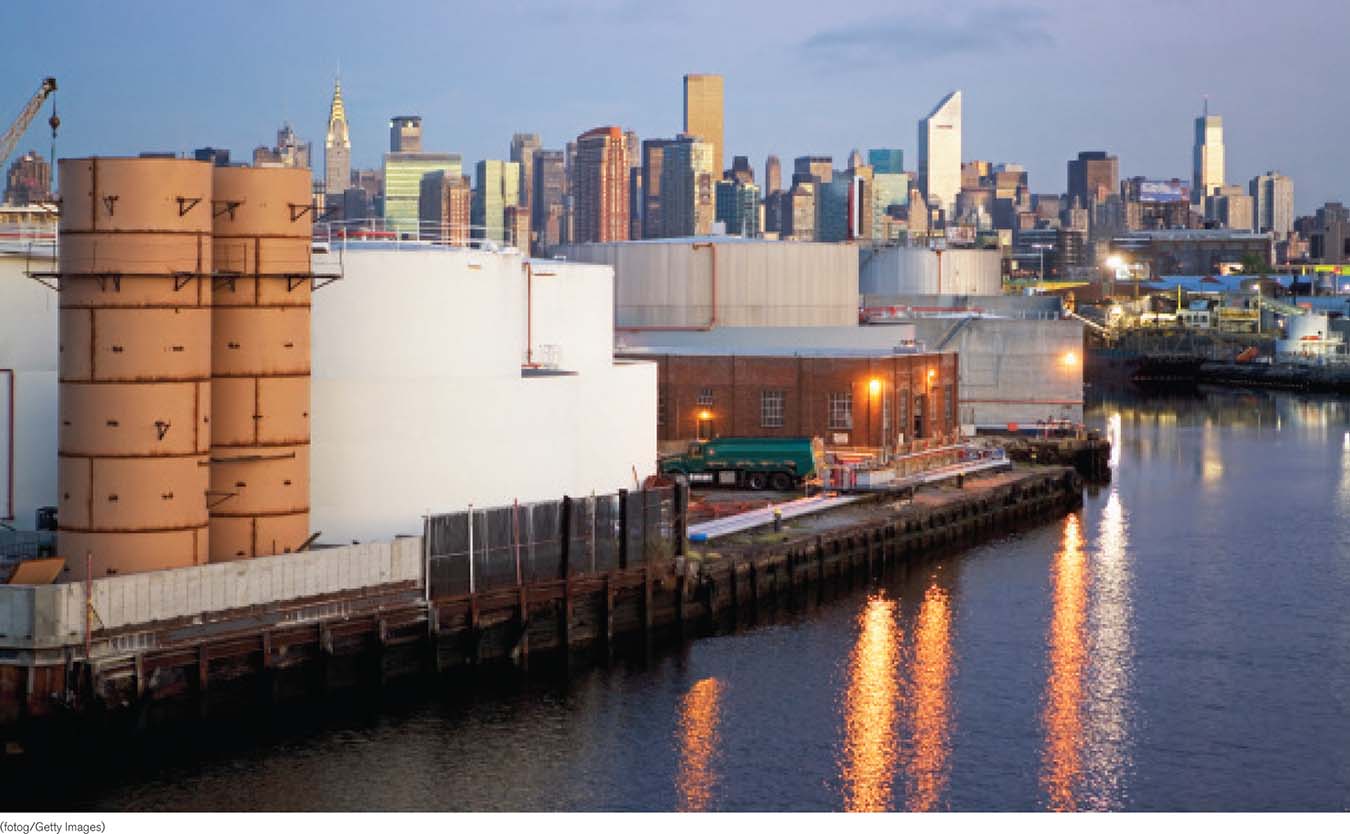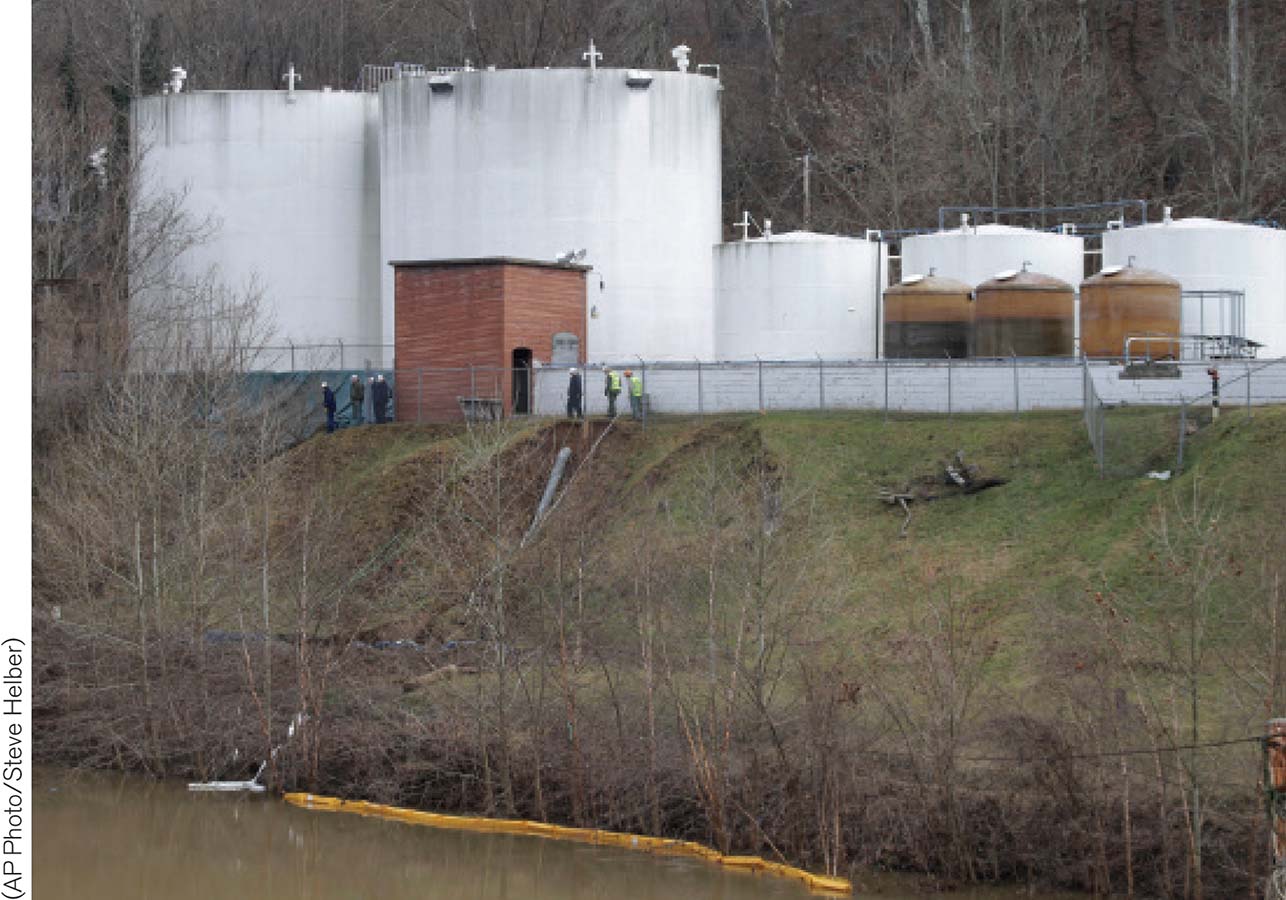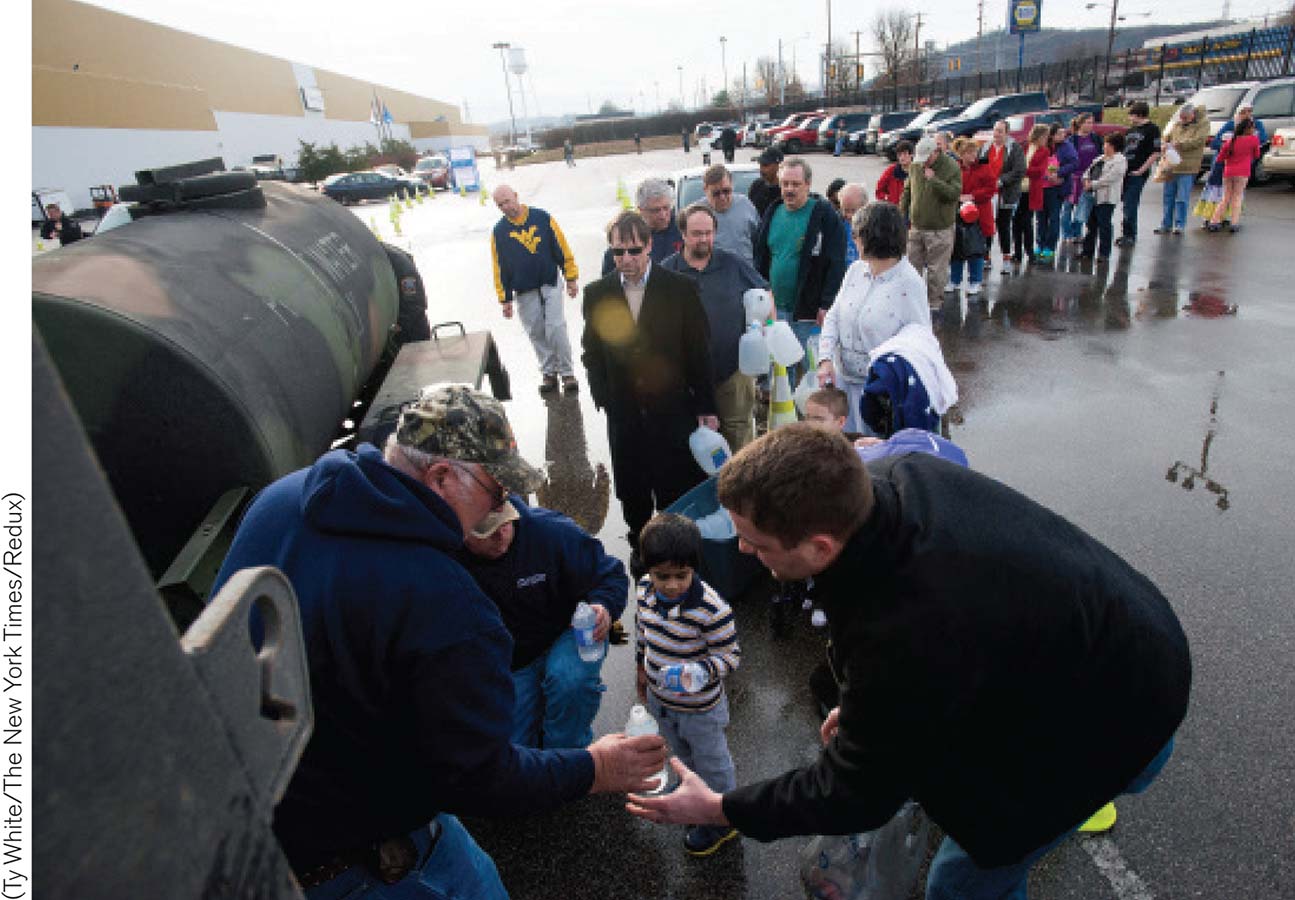Chapter Introduction
CHAPTER 11
Environmental Health, Risk, and Toxicology

Central Question: What is the relationship between the environment and human health and how can we manage that relationship?
 SCIENCE
SCIENCE
Describe the toxic substances and pathogens in the environment and their effects on humans.
 ISSUES
ISSUES
Explain the environmental and human health consequences of exposure to toxic substances and pathogens.
 SOLUTIONS
SOLUTIONS
Discuss how we might assess risk and deal with toxic substances and pathogens in our everyday lives.
Chemical Spill on the Elk River
A toxic leak highlights how little we know about the numerous hazardous substances that affect human health and the environment.


In the mid-
Like many industrial chemicals used widely in the United States, little was publicly known about the toxicity of this chemical, 3-
On January 13, four days after the spill, officials lifted the water advisory. The little data that existed on MCHM indicated that drinking it could harm the liver and kidneys at high doses, but no one really knew for sure how exposure would affect people in the months or years to come. Nevertheless, the incident revealed how environmental hazards, when unchecked by regulation, can affect our health and well-
environmental health An area of research and action that assesses and attempts to mitigate the physical, chemical, and biological factors in the environment that impact human health.
Much of this book is concerned with the health of the environment—
“If we are going to live so intimately with these chemicals—
Rachel Carson, Silent Spring
Central Question
What is the relationship between the environment and human health and how can we manage that relationship?